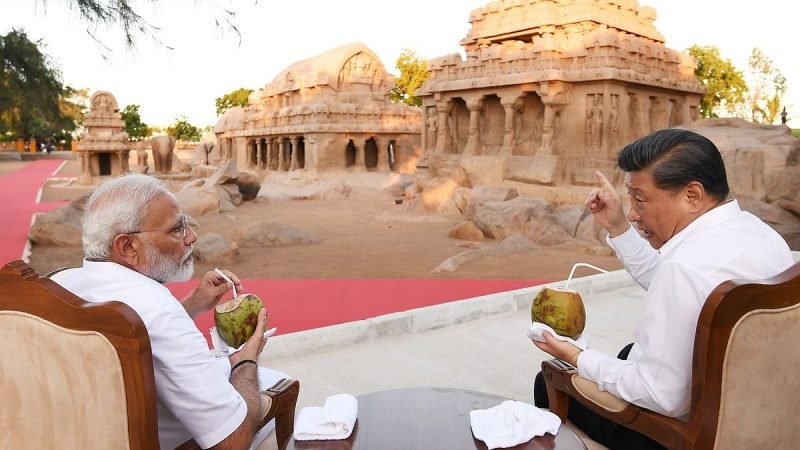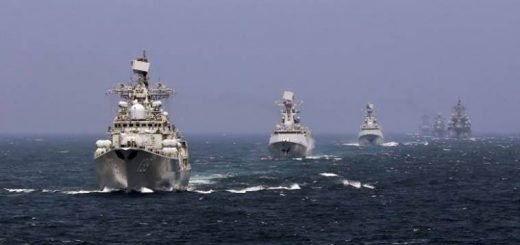India and China relations: PM Modi’s biggest impediment

India and China- two massive nations, comprising one-third of the entire world’s population, among the largest economies in the globe and connected through borders. The new world sees the Asia-pacific as the novel economic and political centre of the gravity caused by the rise of these two powerful nations along with others. Both these states, one knocking on the doorsteps of becoming a superpower and the other who intends to become one, have been rivalrous in gaining dominance in the Asian region. How does India plan to deal with this neighbour? The following brief will analyse the changes that India has adopted in its foreign policy under Prime Minister Narendra Modi as a result of China’s actions.
The India-China relationship has always been of “friend-foe” in nature. Both the nations started off together in the midst of the twentieth century and even though have a long history of cultural and trade links, have seen each other on the opposite ends during border skirmishes. There is no doubt upon the fact that Bilateral trade has continuously grown between both the nations, but the amount of tension- politically, economically and militarily seems to be an ongoing affair. Politically, China strives to obstruct India’s options. It refused to allow Masood Azhar to be listed as a global terrorist, it objected to Dalai lama’s visits to India and refused to accept India in the nuclear supplies group (NSG). Economically, India is reduced to China’s market for its manufactured consumer and industrial goods. Even though there have been several negotiations to reduce the negative trade balance, there has been no improvement and the trade difference has only increased over time. On the security front, China has constantly tried to encompass India in disputes such as by constructing the China Pakistan Economic Corridor (CPEC), claiming areas in Arunachal Pradesh and Aksai Chin and actively engaging with India’s neighbours to undermine its regional influence.

Narendra Modi had asserted during his role as the chief minister of Gujarat that he wanted to do business with Beijing, much before he took over the office of the Prime Minister of India. There was optimism in 2014, when PM Modi came to power in India, that the relations between the two countries would improve and that they would be successful in solving their border disputes. But China’s growing support of Pakistan in 2015 and India’s ties with US and Japan in the form of US-India Joint Strategic Vision for the Asia-Pacific and Indian Ocean (January 2015) along with involving Japan as a frequent contributor in the annual US-India Maritime exercises, did not favour in enhancing the connection. This was followed by two years of strained Sino-Indian relations resulting in the Doklam conflict of 2017. The 2018 Wuhan summit between both the premiers, PM Narendra Modi and President Xi Jinping along with visits on both sides have been progressive but not sufficient to remove the suspicion on both ends. The recent Galwan Valley clash resulted in the death of 20 Indian soldiers and was a watershed moment for the relations between the two countries as well as for the Asian Geopolitics.
Over the years, China has been successful in replacing India as the major trading partner of several neighbouring countries in South Asia. China is also actively investing and providing loans and grants into the economies of Afghanistan, Bangladesh, Maldives, Pakistan, Nepal and Sri Lanka. Moreover, China has increased its presence in the Indian Ocean region (IOR) through the creation of a trade route. This geopolitical theory is known a the String of Pearls. Beijing intends to develop naval bases encircling India such as the Gwadar port in Pakistan, Kyaukpyu port in Myanmar, the port of Chittagong in Bangladesh and the Port Hambantota in Sri Lanka. India under PM Modi’s administration has been working on countering the Chinese influences with its neighbours. India’s recent partnership with Iran resulted in the development of Chabahar Port in Iran which opens up crucial trade links for India and serves as a response to China’s Gwadar move. India is also investing in the Sittwe port in Myanmar and developing bilateral military relations with key countries such in the Indian ocean region such as Australia, Indonesia and the Gulf Cooperation Council (GCC) countries.

PM Modi’s role in rejuvenation of the Quadrilateral Security Dialogue, known as the QUAD, consisting of four members- India, United States of America, Japan and Australia, seems to be a major step in the future developments of the Indo-Pacific. There is a history of Australia and India backing out from this in the past because Australia was a close partner of China and did not want to upset it and India wanted to maintain it’s “balanced approach” and it hoped of getting a share in the Nuclear Supplier Group, something that depended on China. But China’s much contentious Belt and Road Initiative (BRI) and its aggressive stance in the Indo-Pacific region has again called for the emergence of the QUAD. Now, with India allowing Australia to join the annual trilateral Malabar naval exercise between India-USA-Japan, it seems as if the QUAD is in existence again.
The tension at the Line of Actual Control in Ladakh has paved way for India to be more flexible in adopting Anti-China measures as opposed to earlier when it was cautious in forming alliances since it wanted to maintain its relations with China. China currently has ongoing trade or territorial disputes with the US, Japan, Australia, Vietnam, Indonesia, Taiwan and the Philippines. Prime Minister Narendra Modi’s dynamic diplomacy in the past six years has been successful in maintaining excellent relations with all these nations. This goodwill has been an important factor in India’s advancement in the Indo-Pacific region.

China is definitely a complicated challenge for India owing to the differences in ideologies, China’s aggressive ambitions in gaining control over the Indian Ocean region, Beijing’s proximity with India’s arch rivals and New Delhi’s rejection of the Belt and Road Initiative. PM Modi has, ever since coming to power, tried to maintain cordial relations with the neighbour but none of the attempts have been fairly successful. All of this has only been pushing India towards China’s foes- US and Japan.
References:
https://moderndiplomacy.eu/2020/07/24/analyzing-the-2020-india-china-standoff/
https://www.dw.com/en/how-pm-modi-changed-the-face-of-indian-foreign-policy/a-48618235
https://www.cfr.org/expert-brief/economics-influence-china-and-india-south-asia
https://www.projectstatecraft.org/post/quad-the-indo-pacific-balance


















